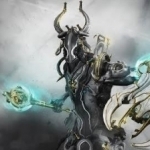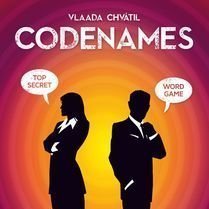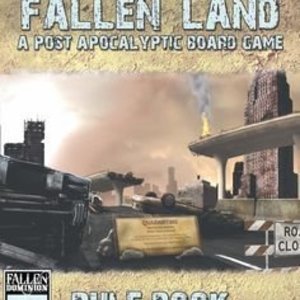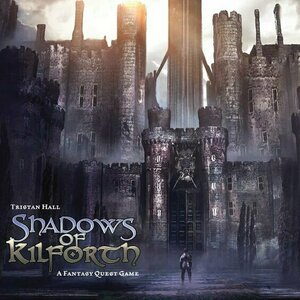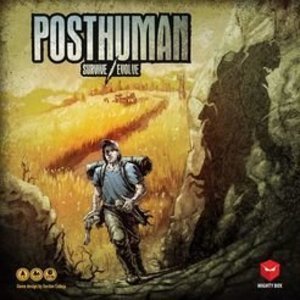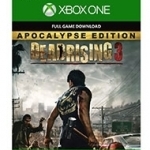Mothergamer (1613 KP) rated Warframe in Video Games
Apr 3, 2019
You play as a member of the Tenno, a race of ancient warriors who have awoken from cryosleep and find themselves at war with a race known as the Grineer who appear to be human clones with metal mods and the Corpus a corporation with robots and laser technology. I found that concept pretty intriguing and decided to check it out on my computer.
There are three starter warframes to choose from; Mag, Volt, and Excalibur. I decided to go with Mag and started my adventure in Warframe and named her Pirotess Dragontamer like my Final Fantasy XIV character. The introductory tutorial is quite helpful which gave me a chance to get used to the battle controls. I also liked that you can change the colors of your warframe and customize it to your tastes.
My Mag warframe is pretty cool.
There are so many missions you can do on each planet ranging from rescue missions to spy missions. You can do these missions solo, but it's definitely easier to do them with friends. The max number of people on a team is four and it does make a mission go a lot faster when you have a full team. Finding a team is fairly easy as you can make your match settings public and the game will match you with people who are doing the same mission.
Pirotess doing a mission with her friends.
I'm glad I tried Warframe out because I love it. It's a lot of fun to play and the story is very interesting. The graphics for the game look great and the voice acting and music is really good as well. It's hard to believe it's a free to play online game because there is so much content and so many great areas to explore.
You can also do crafting in the game and it isn't boring. In many of the missions you get blueprints for weapons and different warframes which you can build in your ship. Level grinding is not boring at all because of the variety of the missions. You also have solo missions for ranking up your warframe. The max level for a warframe is 30 and you can level up your weapons and pets as well.
Pirotess on her Frost warframe.
My husband Ron plays Warframe with me as well and he's really enjoying it also. It's a lot of fun playing the game together and with our friends. Having a good clan helps too because they can help you get missions done as well as helping with getting blueprints and items you need for crafting and modding equipment.
I'm also looking forward to the new expansion for the game, Plains of Eidolon because it looks fantastic and there's going to be even more things added including a new warframe. Warframe is so much fun and I love just exploring and doing all the events and missions with everyone. It's fast paced and fits in my wheel house for sci-fi space games. Now, I'm off to explore more of the galaxy!

Total Conquest - Online combat and strategy
Games and Entertainment
App
Sound the call to battle and join legions of players online in a battle to control the Roman Empire!...

Puppet Soccer 2014 - Football championship in big head Marionette World
Games and Sports
App
Smash the football and score goals in this addicting soccer game! Pick your favorite team and play...
Matthew Krueger (10051 KP) rated Codenames in Tabletop Games
Jul 17, 2020 (Updated Jul 18, 2020)
I learn about this game through the Funhaus Channel. And personality wanted to buy it after watching it. It looked easy, fun and entertaining. So when i saw it at Pax i knew i had to by it. If you dont know what Codenames is or never heard of it. Let me explain.
Codenames is a party deduction word card name for 2-8 people. It came out in 2015, designed by Vlaada Chvátil and published by Czech Games Edition.
The Objective: Two teams compete by each having a "spymaster" give one-word clues that can point to multiple words on the board. The other players on the team attempt to guess their team's words while avoiding the words of the other team.
The Gameplay:
Players split into two teams: red and blue. One player of each team is selected as the team's spymaster; the others are field operatives.
Twenty-five Codename cards, each bearing a word, are laid out in a 5×5 rectangular grid, in random order. A number of these words represent red agents, a number represent blue agents, one represents an assassin, and the others represent innocent bystanders.
The hint's word can be chosen freely, as long as it is not (and does not contain) any of the words on the code name cards still showing at that time. Code name cards are covered as guesses are made.
After a spymaster gives the hint with its word and number, their field operatives make guesses about which code name cards bear words related to the hint and point them out, one at a time. When a code name card is pointed out, the spymaster covers that card with an appropriate identity card – a blue agent card, a red agent card, an innocent bystander card, or the assassin card – as indicated on the spymasters' map of the grid. If the assassin is pointed out, the game ends immediately, with the team who identified him losing. If an agent of the other team is pointed out, the turn ends immediately, and that other team is also one agent closer to winning. If an innocent bystander is pointed out, the turn simply ends.
The game ends when all of one team's agents are identified (winning the game for that team), or when one team has identified the assassin (losing the game).
Its a fun entertaining deduction party card game and can be played over and over again without losing its charm. Its excellent board game and a must buy if you haven't bought it yet.
Paul Kellett (118 KP) rated Fallen Land: A Post Apocalyptic Board Game in Tabletop Games
May 9, 2019
On first opening the box, you are greeted with a few punchboards, the game board and a ton of cards, there is a lot contained in such a small box.
After punching and organising everything, I read the rules, painted the little plastic faction tokens and made some character inventory sleeves to help keep the play area neat.
The rules are really well written and easy to follow & understand with plenty of examples and pictures. there is a helpful index on the inside back page so you can quickly find anything you need mid-game.
The first solo variant is basically just a "reach the victory point win in as few turns as possible" - a great way to quickly learn the basics of the game and very enjoyable. It will be good if you just want to play a fairly quick (60-90 minute) survival/exploration game.
The second solo rule set is where the game really kicks into high gear. You choose a number of opponent factions depending on how much of a challenge you want and during the Town Business Phase, roll a D10 for each faction, comparing the result to a chart in the book to see what each faction does. these results can boost each faction up one or both of the victory point tracks (getting to the top of either one is a win) or more importantly, initiating PvP combat against your faction.
While this is still not the same as playing against real opponents, it offers a great challenge that will test your luck and skill to beat.
So what sets this game out as a solo gem? It's one of the most immersive games I've played. It's part open-world survival boardgame, part rpg and part story book.
You are the leader of a faction of survivors following a devastating war that destroyed the US leaving pockets of survivors trying to eke out a living among the radioactive ruins. As you make your way around the map, trying to secure vital resources or checking out points of interest, you will be drawing encounter cards and trying to complete them.
You control a team of 5 characters plus a vehicle if you are lucky and start the game with 10 items (from assault rifles to baseball bats, med kits to body armour and everything in between) which you can equip to each character any way you see fit. Some characters will get a bonus if they have certain items and some items can grant boosts to your entire party.
Here is where the RPG feel comes in. Each character and Item has a row of skill attribute boxes along the bottom edge of the card with skills such as Combat, Survival, Medical, Mechanics and Diplomacy. Your character card has a maximum carrying capacity and each item a weight so your character can only carry a certain number of items.
Skill checks are simple, you add up the total values in each attribute column of your character plus his/her equipment. Every 10 is an automatic success. Then you roll a D10 and must roll equal to or lower than the unit value. So, if your combat total is 14, then you get 1 success for the 10 and then must roll 4 or less to get a second success. This makes equipping items very important as not only do you want your skills to be as high as possible, it's often preferable to store an item for later if it would result in a lower unit thus making the die roll harder.
On to the encounters. There are a lot of them. Seriously, loads and each one on them has a mini story delving into another aspect of life after 'the war'. These add so much to the feeling of being immersed in a full world and are varied and well written. Each encounter will list a series of skill checks and the number of successes you need to pass. This is Ameritrash at it's finest Read a story, roll a bunch of dice and the deal with the outcome. A successful result will see you off with a new stash of items, victory points or maybe even new characters you can rotate into your team to replace injured members or just improve your chances with better skills.
There is so much in this game, the sheer number of cards is immense. the replayability is sky high as you will never see everything this game can offer. There are character combinations that complement each other if used together (what are the chances of drawing a husband and his wife together out of a deck of over 100 cards?), locations and storylines that trigger bonus effects if you have the right gear and 10 different factions each with their own skills and bonuses.
This game is certainly not for everyone - if you don't like luck-based games then you might not enjoy the amount of dice rolling and card drawing in Fallen Land.
The art is also divisive. It's very stylized and cartoony but it works with the feel of the game. It's not a pretty experience, everything is broken and destroyed, it's a harsh, Mad Max world of brutal survival and the art on the cards kind of fits this feel and to be honest, most of it ends up covered up and you concentrate more on reading the stories and trying to survive.
All in all a great so experience and a fantastic, brutal multiplayer game.
Purple Phoenix Games (2266 KP) rated Shadows of Kilforth: A Fantasy Quest Game in Tabletop Games
Sep 3, 2020
Shadows of Kilforth is subtitled, “A Fantasy Quest Game.” Right there in the title you find out exactly what you are up against in the very foreboding but unassumingly-sized box. A game set in a fantasy world that is focused on questing. I have to admit up front that this review will be treated a little differently as the rulebook is hefty and nobody wants to read a thorough rules essay on Shadows. So I will give you a very high-level overview of the main steps and then give you my thoughts on how it all works together.
DISCLAIMER: We were provided a copy of this game for the purposes of this review. This is a retail copy of the game, so what you see in these photos is exactly what would be received in your box. I do not intend to cover every single rule included in the rulebook, but will describe the overall game flow and major rule set so that our readers may get a sense of how the game plays. For more in depth rules, you may purchase a copy online or from your FLGS. -T
Shadows of Kilforth is essentially a card and dice RPG-esque adventure game with an Asian-style theme but set in a fantasy world where locations will be devastated into gloom (building upon the first in the series Gloom of Kilforth). The players, as the heroes, have the daunting task of journeying throughout Kilforth’s 25 locations to collect items, allies, spells, and titles to overcome main quests and subquests before every location falls into gloom. These quests usually have the players gathering specific card types to satisfy and complete. Once main player storyline quests, called Sagas, are completed the hero levels up and when they complete their fourth quest in their main Saga they may attempt their Finale and then may finally assault the big boss, the Ancient.
Each turn players have Action Points (AP) to spend on doing different actions: movement, discovering rumours (yes, I know it’s the Queen’s English), confrontations, and regaling a Saga chapter, among several others. Some actions are free actions, called Deeds. These include resolving loot tokens, assaulting an ancient, exchanging items between players, and several others. By using combinations of Actions and Deeds players will be able to travel around collecting those items, allies, and so forth needed to complete their Saga chapters.
To complete objectives and quests, players will typically be rolling dice to meet requirements on the cards. This, as all role-players know, can be either supremely lucky or incredibly and predictably debilitating. Skill checks are abundant in Shadows and diversifying characters may or may not have advantages by being able to complete Fight, Study, Sneak, and Influence tests. Players will win if they can complete their Sagas and defeat the Ancient before all of the locations fall into gloom, signaling the end of the game.
All this, again, is very high-level and there are many intricacies in Shadows that I just cannot go over for the sake of time and the health of my typing fingers. But, the game can be played solo, cooperatively, or competitively. So depending on the mode of play and number of players Shadows can range from a 45 minute foray to multi-hour epics. This is why I have played this solo with one character for my plays.
Components. Shadows of Kilforth is very card-heavy, but also includes other goodies. The cards themselves are firstly quite numerous, but also good quality. I can see myself sleeving this and loving every minute of that process. Aside from the cards, the game includes standees for player pieces on the card map, wooden components to track HP, AP, Fate, Obstacles, Gold, Hidden characters, great swirly 6d6, and also cardboard chits for Loot tokens. I haven’t even mentioned the art yet and that may be the most stunning component in this game! I LOVE a game with great art, and Shadows has simply amazing art. This is not usually my style of game art either, but it is so pleasing and everything makes sense and gets me immersed in the game. Everything provided is wonderful quality and an absolute joy to use during play.
Ok so like always, we place our ratings graphic right at the top of our posts so our readers can see right away what we think of the game. As you can tell, I love Shadows of Kilforth. It has essences of so many games I enjoy pieced together in a very attractive and captivating package. The movement and subsequent destruction of map-cards are reminiscent of Forbidden Island/Desert and Tiny Epic Defenders, which I really love (don’t hate – it’s a good game). The gathering of select card types and returning to a location to complete feels like fetch quests in MMORPGs (Final Fantasy XI being my main squeeze for many years). Obviously dice skill checks and level ups from tabletop RPGs are in there as well.
Shadows is just such a great collection of mechanics that I love that I can see myself playing this game over and over and over. Caveat: I will never play this any way other than absolutely solo. My first play, yes a learning session, was just shy of two hours from setup to tear-down. Adding players will increase game length, and playing with AP-prone friends is a no-go for me on Shadows; I had to reference both the excellent provided cheat sheet and the rulebook throughout the play but I eventually got the hang of it and was able to fly through. I may play this solo but with multiple characters cooperatively someday, but I do not wish to play this with other people. Ever.
So here’s my final thought. Shadow of Kilforth is a beefy game, but is well worth the time and effort to learn and play a couple times before passing judgment. It has everything I love in a game and I can’t stop thinking about it. I want to play all the different Race/Class combinations and just dunk on all the Ancients. If only my dice didn’t hate me so much. I will certainly be keeping this one forever, and if you are a fan of fantasy themed adventure card games with heavy use of dice and cool components, DEFINITELY take a look at Shadows of Kilforth. As I am the only one who has played this, I speak for the team in saying Purple Phoenix Games gives this one a 6 / 6. Treat yoself to this one, folks.

Ticket to Ride: First Journey
Games
App
"***It looks like Days of Wonder has come up with a solution to my problem with the introduction of...
Purple Phoenix Games (2266 KP) rated Posthuman in Tabletop Games
Aug 25, 2021
Posthuman is set in that dark post-apocalyptic horrorscape and is an exploration adventure game with character upgrading and dice-driven combat. The twist here is that humans are trying to escape the mutant creatures to The Fortress, a safe haven for all, but once infected may turn mutant and also turn on the party to prevent that glorious end. In this review, however, I will be playing through the solo rules, and they do not have players turning into mutants during the game. Bummer, eh?
DISCLAIMER: We are using the Kickstarter Deluxe version of the game. We do have the Defiant expansion from the KS campaign, but will not be using it for this review (I don’t think). Also, we do not intend to cover every single rule included in the rule book, but will describe the overall game flow and major rule set so that our readers may get a sense of how the game plays. For more in depth rules, you may purchase a copy from the publisher directly or from your FLGS. -T
To setup consult the rulebook, as there are so many decks of cards and character setup steps that need to happen that I just cannot detail here. Once setup your play area will look something like the photo below. Once setup is complete you are ready to begin your journey to The Fortress.
Posthuman is played over a series of rounds until the player wins or loses. The only way to win is to enter The Fortress before the Event deck runs out, and obviously the only way to lose is to run the Event deck out of cards or become a mutant by suffering five scars.
A round consists of several phases. The first phase is Event Resolution. The player will flip the top Event card and resolve its text. These Events could be a one-shot bad (or good) thing for the player, or may be an ongoing Seasonal Event that will stay in play until another Seasonal Event is drawn.
After the Events, characters will need to Eat to survive. Characters will be able to forage for food in a subsequent phase, but know that food is very important and if characters go too long without eating they will be suffering penalties of their Health and Morale.
Once fed (or starved, I suppose), the player will Declare an Action from the following: Camp, Forage, Scout, or Move (in multiplayer there is an additional action as well). To Camp players will forego any other action to heal their character. When a character Forages they will flip the current tile’s marker to show it may no longer be foraged and draw a Supplies card to see what supplies they will be able to gather. These could be more food tokens, ammo, equipment or weapons. To Scout a character will draw terrain tiles equal to the number of exits shown on their current terrain tile. The player will place the tiles however they want and this will provide insight into future locations and what they may hold. Lastly a player may Move into a connected terrain tile and begin having encounters upon it.
Most of the action in Posthuman comes as a result of having encounters on terrain tiles. Depending on where the character meeple is located on the Central Board track encounters will be drawn from the level one, two, or three decks and encountered immediately. Most of the encounters are combats, and I could write another whole post on combat, but I will spare you the details and merely say that combat is very involved and encompasses many steps to resolve. At the end of the combat a character may receive the encountered creature card as a VP trophy to be spent later on upgrades. The VP card may also instruct the player to move the meeple one space closer to The Fortress on the Central Board track. The other type of encounter card presents choices for the player to make or stat tests to overcome via die rolls.
Play continues in this fashion until the player wins by reaching The Fortress, or by losing to the forces set against them.
Components. This box is chock FULL of components and they are all super high-quality and enjoyable to play with. I do have a couple issues with some bits. Firstly, the player boards are quite small, and the tracking cubes are not meant for big meaty paws at all. Similarly, the tracking chits to be used for stats on the player board are flimsy and don’t really stay in place too well. Also the game comes with two different shades of gray player meeple colors and NOT a purple option. Shame! Shame! Shame!
When all is said and done Posthuman delivers an exciting experience on the table for a solo player and indulges the player’s need to roll dice on the regular. Just me? Didn’t think so. The combat is great, but I found myself discarding more enemies than defeating in some games and that is quite annoying. One game I refused to Scout at all and that totally bit me in the booty. So Scout, y’all.
Just know that playing this solo is NOT a cakewalk at all. I watched a playthrough video where the host won the game but nearly every roll of the die was favorable and every combat successful. Even still, she nearly ran out of time and lost the game. So games really can come down to the wire. Now, I haven’t really gotten very close to winning yet, but my day is coming!
I like this one a lot, and will certainly be going back to it for my solo plays. I have been playing some really great solo games lately, and I am very thankful for that. Posthuman, however, I don’t think will get much multiplayer action at my house. The rules are plentiful and the people I normally game with do not enjoy rules-heavy games. Similarly, I don’t think the theme is for everyone. I dig it, but different strokes and all. If you are in the market for a new (to you) game that can be played solo or multiplayer with an interesting theme and is pretty difficult, look up Posthuman. Just stay away from the mutants. These do NOT want to recruit you to their school for gifted people.

Sniper 3D Gun - Multiplayer Shooting Games
Games and Sports
App
War has evolved, and so has the best FPS Multiplayer on mobile! The incredible online confrontation...
Gareth von Kallenbach (980 KP) rated Dead Rising 3: Apocalypse Edition in Video Games
Jun 19, 2019
Apocalypse edition, I was thrilled. I have not been one eager to jump on
the Xbox One bandwagon and prefer to play my games on PC.
Having enjoyed the first two games in the series, I eagerly loaded up the
game and jumped into a casual co-op game where a fellow gamer and I worked
our way through levels teaming with hordes of the undead.
Like the other games in the series, I was able to use various vehicles to
run down and force my way through the hordes and of course, anything on
the very big and detailed maps can become a weapon, while there are guns,
grenades, swords, and traditional weapons, players will also find teddy
bears, hubcaps, laptops, bricks, and countless other goodies to ward off
being the main course at a Zombie Buffet.
Players will also be able to gather items and plans so they can easily
craft weapons such as a combination power saw and sledgehammer which makes
short work of all those in your path.
Like the previous games, missions are assigned and cut scenes are used to
move the story along as players often have to locate and return various
items for characters so they will do something for you in return that
allows you to advance.
Having played both in solo mode and with a flesh and blood player, I can
tell you that I greatly prefer having another player on hand as they can
help you fight, navigate, and survive, which is key as there is not always
a helpful amount of food or drink around to help you replenish lost
health.
Since players can only manage a few weapons at a time in their inventory
and Items do destruct after a certain amount of use, being on the lookout
for the next weapon is key as I have been in extended fights when my
options ran dry and I was forced to run.
Graphically the game is solid but not what I would call cutting edge. My
biggest issue with the game was that due to the huge and frequent hordes,
there were times when I lagged almost to a standstill which was not
something that helped enhance my enjoyment of the game.
That being said, the variety of gameplay and the story of the game that
clearly let you know the clock was ticking on your window for survival
really added a sense of urgency to the game.
I enjoyed the free form variety of the game such as taking a muscle car
and executing a flip off of a ramp into a wall of fire to take down a
Zombie that was clinging to the car. Some would call this overkill, but
that is simply how I roll.
From multiple game modes to plenty of in game options, Dead Rising 3 is
tons of fun, now if only they could do something about the in game lag, we
would really have a winner, as it is now, it is a good game that could
have been great on PC.
http://sknr.net/2014/09/15/dead-rising-3-apocalypse-edition/
